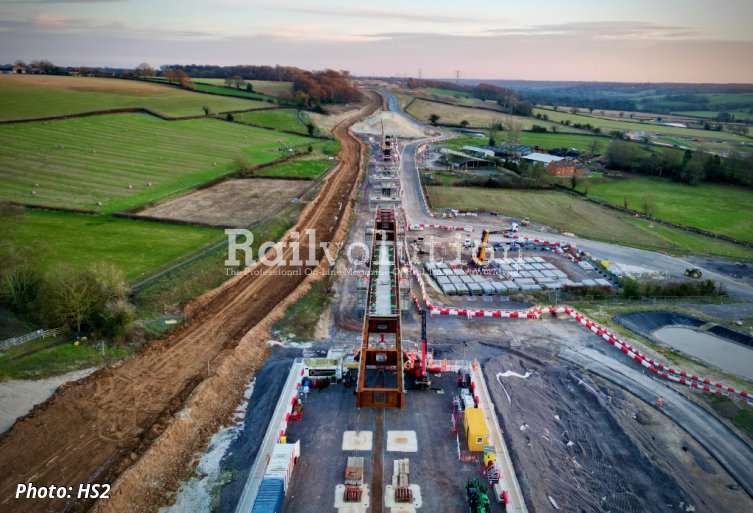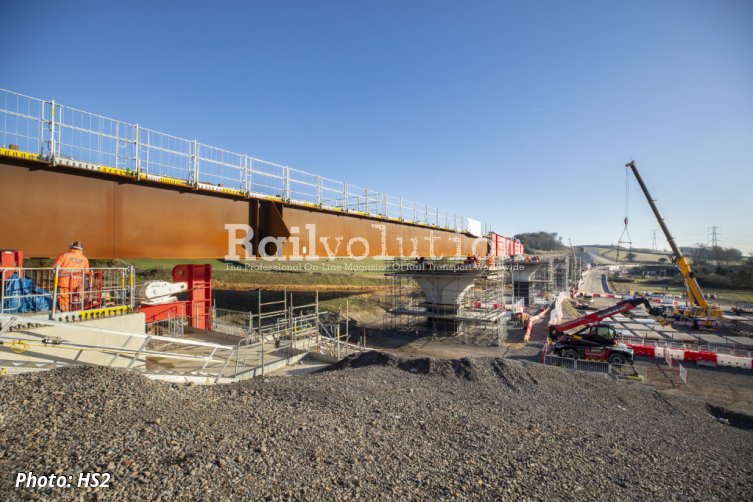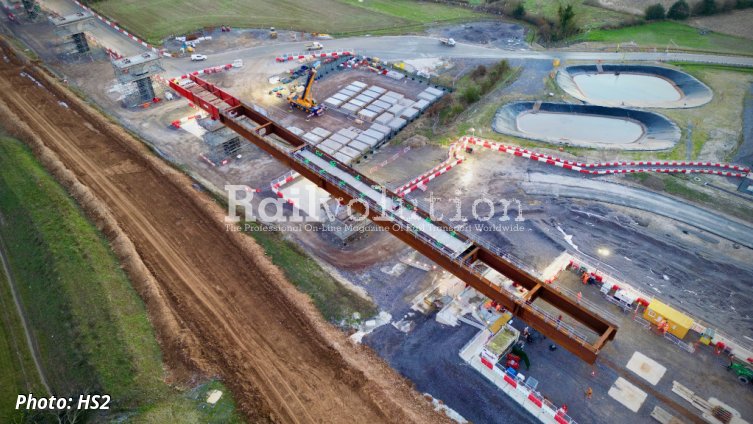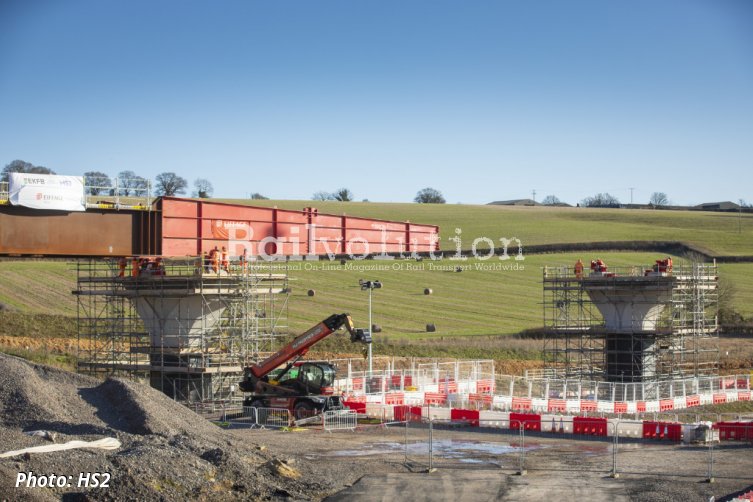HS2 begins epic year-long, half-kilometre viaduct deck slide
posted on 16th Jan 2024 12:52
In the second January week, engineers began a delicate job that will see almost half a kilometre of bridge deck slid into position over the next year, high above the Misbourne Valley in Buckinghamshire, as HS2’s Wendover Dean Viaduct enters a critical new stage of construction. The 450 m long viaduct will be the first major railway bridge in the UK to be built with a ‘double composite’ approach, which uses significantly less carbon-intensive concrete and steel than a more traditional design - and has allowed HS2 to halve the amount of embedded carbon in the structure.
It is one of 50 major viaducts on the HS2 project. Instead of using solid pre-stressed concrete beams to form the spans between the viaduct piers, the ‘double composite’ structure uses two steel beams sandwiched between two layers of reinforced concrete to create a lightweight and super strong hollow span.
Due to the length of the viaduct, the deck is being assembled in three stages, ranging from 90 m to 180 m sections, with each one pushed out from the north abutment before the next section is attached behind it. This painstaking process means that the weight of the deck will increase with each push, up from an initial 590 tonnes this week to 3,700 tonnes by the end of the year.
Tomas Garcia, HS2 Ltd’s Head of Civil Structures said: “Double composite structures maximise the combined strength of steel in tension and concrete in compression. This approach has been tried and tested around the world and it’s great to see it applied on this scale for the first time in the UK at Wendover Dean. Once complete, HS2 will help enhance the existing rail network by freeing up capacity on the busy West Coast Main Line and almost halving journey times between London and Birmingham. This viaduct will play a crucial role enabling those faster and more reliable services - and I hope it will also inspire other projects around the UK to consider this innovative approach to construction.”
The viaduct is being built by HS2 Ltd’s main works contractor, EKFB - a team made up of Eiffage, Kier, Ferrovial Construction and BAM Nuttall - with the manufacture and installation of the beams being led by specialists at Eiffage Metal. A winch is used to push the deck forward at a speed of around 9 metres per hour, sliding across Teflon pads to reduce friction - a material usually found to the surface of a non-stick frying pan. It is the longest deck slide on the HS2 project to date.
At this point in the Chilterns the railway will be on a slight gradient, so to help maintain control, the deck - which will eventually weigh the same as 264 double-decker buses - is being pushed slightly uphill, with the finish point approximately 1.8 m higher than start point.
EKFB worked with their design partner, ASC (a joint venture between Arcadis, Setec and COWI) and architects Moxon on the ‘double composite’ approach which was inspired by structures on the French high speed TGV network. The approach is set to cut the carbon footprint of the structure by 56 % - saving almost 13,000 tonnes of embodied carbon - and helping HS2 achieve its goal of halving the amount of embedded carbon in construction.
The beams are made of ‘weathering steel’ which naturally fades to a dark brown colour over time and will help match the natural tone of the surrounding countryside. A similar approach - using weathering steel and a double composite structure - is also being taken at the nearby Small Dean Viaduct which is currently at a much earlier stage of construction. Weathering steel gets its characteristic colour from a surface layer of corrosion which protects the steel and removes the need for regular painting.
The Wendover Dean Viaduct will be supported by nine evenly spaced piers, some of which will be up to 14 m high. These consist of a series of hollow pre-cast concrete shells - manufactured in Northern Ireland - which are placed on top of each other and filled with concrete and steel reinforcing. This approach was chosen to enable a crisp, clean external finish to the concrete, cut the amount of work on site and reduce disruption for local residents.
The last few months has also seen significant progress at HS2’s other major viaducts, with the first concrete poured for the approach viaducts for Birmingham Curzon Street station, the first beams installed at Thame Valley near Aylesbury and the Delta Junction in North Warwickshire. In total, HS2 is building more than 500 bridging structures – ranging from small road bridges to massive viaducts like record-breaking Colne Valley Viaduct which will become the longest in the UK.




